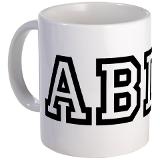Dr. Joseph Barber
Time is a funny old thing – we’re either wishing we had more of it, or wishing it would pass more quickly. We are never quite satisfied with what we have got. Time might be relative (and no, I don’t really know what this means), but we are relatively certain that it is also finite. The reason that I am thinking deep, philosophical thoughts this early on a Monday morning is that I just came across another social networking site for academics, scientists, and researchers. This one is called MyScienceWork (www.mysciencework.com). This one can be added to the list of those that try to cater to the scientific, academic, or research communities in one way or another (e.g., LinkedIn, Academia.edu, ResearchGate, Vitae, Versatile PhD). The problem is, as this exciting list of social networking opportunities grows, the time available to use them seems to shrink (is that relativity?) There is certainly not enough time in any day to do study, complete research AND have a complete and updated profile on every single social networking site that pops up. This can leave people feeling a little guilty that they are not reaching their fullest networking potential. However, spread yourself too thinly, and you run the risk that you don’t get the most out of each platform you might use. So, my next few posts will take a brief stroll through some of the social networking sites that are especially relevant to academics and researchers. Let’s start with the biggest fish.
Still the biggest, and many would probably argue the best. This is very commonly used for research students at universities as they are making use of the alumni networks available to them. Researchers within industry (e.g., biotech, pharma, start-ups, life science consulting) also tend to use this site a lot. There are university faculty members on LinkedIn, but many represent more junior members of a department who are more familiar with social networking in the virtual world. There are certainly some faculty who actively shun LinkedIn and all it represents. I have heard of one faculty member who stated to a student that anyone who has a LinkedIn account would immediately not be taken seriously as someone who wanted to pursue an academic job as a tenure-track professor. That’s a little extreme, pretty short-sighted, and will certainly be a perspective that becomes the minority view over time.
LinkedIn has gotten a little more researcher friendly over time. You have been able to include publications on LinkedIn for a long time. However, it was only possible to list yourself as the first author for a long time (i.e., your name would always appear first in the list). Given the importance of whose name comes first in scientific circles, elevating oneself to first author would be very controversial! The good news is that this issue has been addressed. You can now position your name appropriately in the list of other authors – so go ahead, add a selection of your publications! There are also places throughout your profile where you can link to papers or upload documents. This can make it easier for people to access your work.
You can also go into more detail about some of the research projects you are involved with by actually listed them under the “Projects” category on your profile page. This way, you can provide a broader overview of your work in the “Experience” section, and a more in-depth summary of your unique research elsewhere. Combined with information you can add on your patents, courses taken, and the list of skills and expertise you have, you can get a lot of information across about your academic experience and research know-how. As for those skills that people can endorse you for, they are really a bit of a mixed kettle of fish. You can certainly list some great keywords that might help people find you on LinkedIn. Recruiters do search for people with hard-to-find skills and expertise, so if you have some of these, then mention them. The problem is that people will endorse your skills without even having any experience of you using them. It’s not a bad problem – it makes your skill look more effective when you have lots of people saying you have it – it just feels a little vacuous. What is worse, though, is people coming up with new skills that they think you have. I would not list “statistics” as one of the skills that I have, so please stop suggesting that I add this to my profile.
There are extra whistles and bells you can add to LinkedIn through third-party applications, but there seem to have been several recent changes to the profile page that integrate these more fully into the LinkedIn platform. If you want to share your last presentation, then you can upload this via SlideShare and link it to a particular experience or project on your profile page. There isn’t really anywhere obvious to list conferences or symposiums attended, or presentations or posters given, but with some creative use of the sections available to you, it is possible to get the most important information you want to share on your profile. Leave the rest of your conference-related experiences on your CV – they are probably not essential to your brand anyway.
BRANDING
LinkedIn lets you create a bit of a brand when it comes to presenting your work and knowledge. Your brand is the “you” that you want everyone else to see – your potential, your achievements, the length and breadth of your combined knowledge and experience. It can be hard to create a single brand that is equally attractive to the different people you might want to visit your profile (e.g., the search committee from a university, or consulting/biotech/science writing employers), and so you will lose a bit of the benefit of tailoring how you want to present yourself when you are keeping your career options open.
INFORMATION GATHERING
The other benefit of LinkedIn comes in terms of the huge amounts of information you can gather. For example, there are 30,000 members who have proactively joined the Penn Alumni LinkedIn Group. When you join groups, you can search the membership by keyword to find specific types of people you might want to connect with to help you answer your questions. You can even join in conversations and ask your questions to the whole group. Over 100,000 people are grouped together by LinkedIn as having the “University of Pennsylvania” written somewhere in their education section. There is plenty that you can do with this population by using the “find alumni” tool. Both these approaches will help you gather information about the types of positions/employers that might be relevant to you based on where people with similar academic experiences have gone with their careers. If you are in the exploring career options phase, then this type of information can be extremely valuable.
You can actively “follow” organizations, and this will help you to keep updated on news and current affairs about a company that might help you with either your continued networking or even your applications or interviews. Whether you are interested in industry postdocs or full-time non-faculty positions, you can find lists of opportunities under the “careers” tab on most company pages. You might even see the names of some HR/recruiting staff listed, together with people you might know who are associated with that organization. Combined with industry insights you can gain by following “channels”, “publishers”, and “influencers”, there is an endless supply of information you can expose yourself to each day, and this can be a great use of your time. I’m not saying there is enough time to actually digest any of it, though, but it is there for the taking…, especially if you don’t need to sleep.
Time…, it’s a tricky thing. Perhaps it is not a thing at all…, which in my mind just makes it even trickier.


 For a Ph.D candidate in the humanities, LinkedIn might seem to be only remotely relevant. LinkedIn serves as a platform for connecting professionals, yet several important qualities of the academic profession don’t lend themselves to smooth representation in such a social network. Graduate research demands a highly specialized skill set that’s not often widely applicable and the networks cultivated in academia are often already close, occurring independently of a central platform—at conferences, through personal introductions, or perhaps on intra-disciplinary message boards. Anticipating future publication makes sharing samples of professional writing online a dicey proposition. Furthermore, academia boasts a unique culture of industry loyalty: tenure—or the pursuit of tenure—prevents great investment in alternate career paths, and in turn, diminishes the need to demonstrate a skill set beyond those taught in graduate school such as research, teaching.
For a Ph.D candidate in the humanities, LinkedIn might seem to be only remotely relevant. LinkedIn serves as a platform for connecting professionals, yet several important qualities of the academic profession don’t lend themselves to smooth representation in such a social network. Graduate research demands a highly specialized skill set that’s not often widely applicable and the networks cultivated in academia are often already close, occurring independently of a central platform—at conferences, through personal introductions, or perhaps on intra-disciplinary message boards. Anticipating future publication makes sharing samples of professional writing online a dicey proposition. Furthermore, academia boasts a unique culture of industry loyalty: tenure—or the pursuit of tenure—prevents great investment in alternate career paths, and in turn, diminishes the need to demonstrate a skill set beyond those taught in graduate school such as research, teaching.
 Gerald is a sophomore studying in the Huntsman Program in International Studies and Business. Besides his Romanian and Hungarian skills he is fluent in Spanish and is now studying Portuguese. He is the Academic Relations VP for Wharton Europe, is part of the CURF Student Advisory Board and also serves on the Career Services Advisory Board.
Gerald is a sophomore studying in the Huntsman Program in International Studies and Business. Besides his Romanian and Hungarian skills he is fluent in Spanish and is now studying Portuguese. He is the Academic Relations VP for Wharton Europe, is part of the CURF Student Advisory Board and also serves on the Career Services Advisory Board. Recruiting is undergoing a vast phase change and one of the primary reasons for this reinvention is the advent of social media and its profound impact on society and people. Social networking is no longer just about webpages; it is an ever growing experience enriched with the interactions between people. Here are some ways to use social media to prepare for the career fairs next week, and in your general search.
Recruiting is undergoing a vast phase change and one of the primary reasons for this reinvention is the advent of social media and its profound impact on society and people. Social networking is no longer just about webpages; it is an ever growing experience enriched with the interactions between people. Here are some ways to use social media to prepare for the career fairs next week, and in your general search.